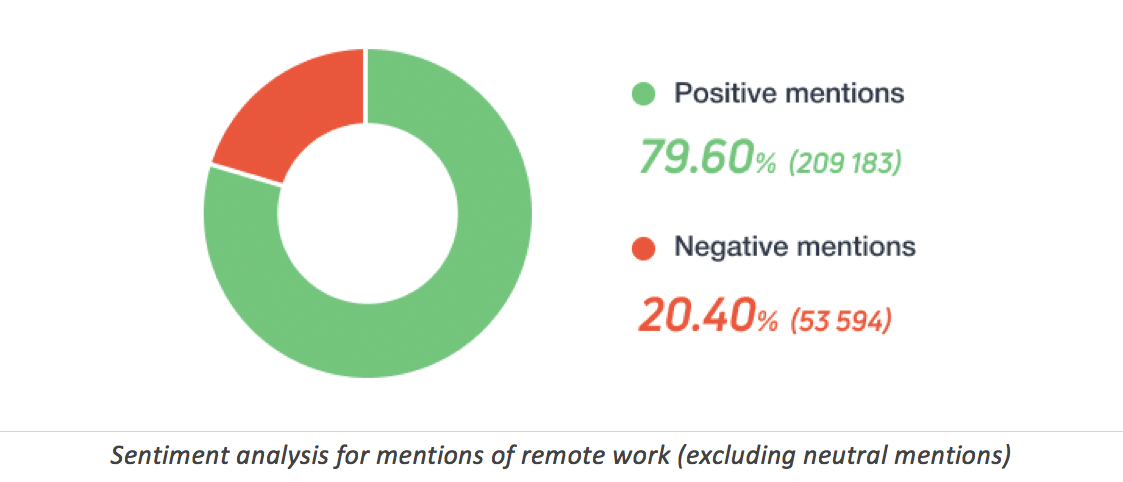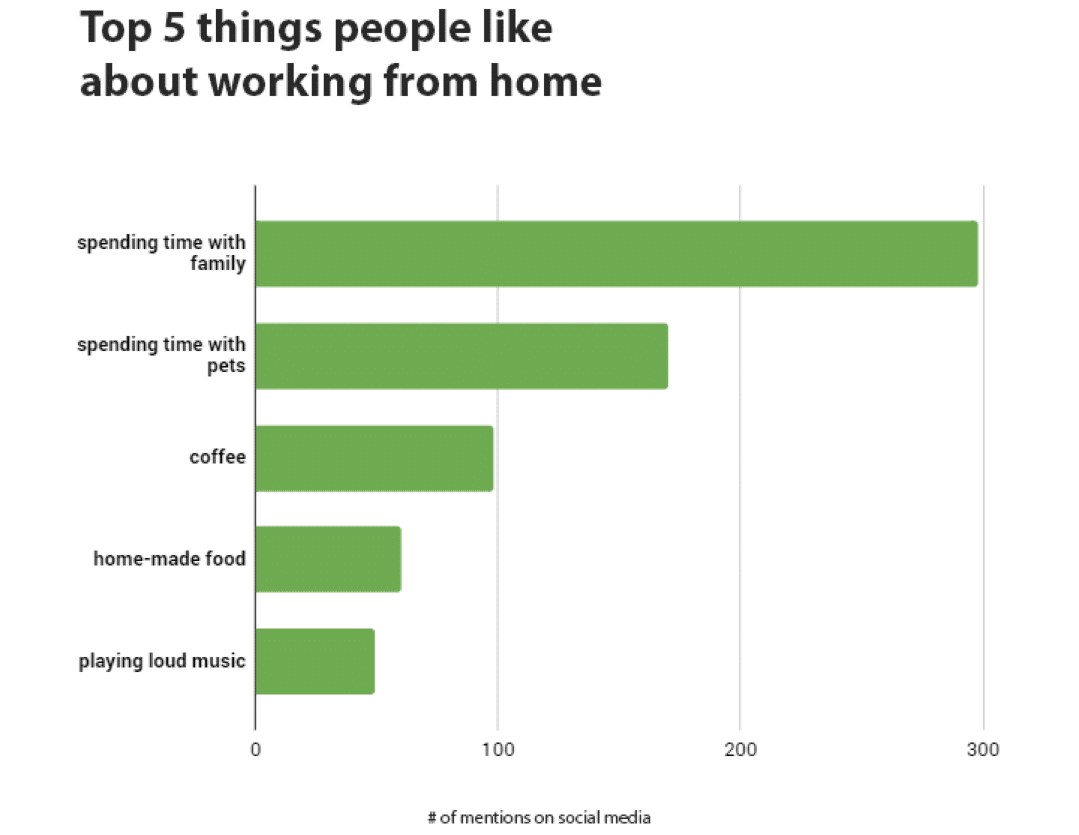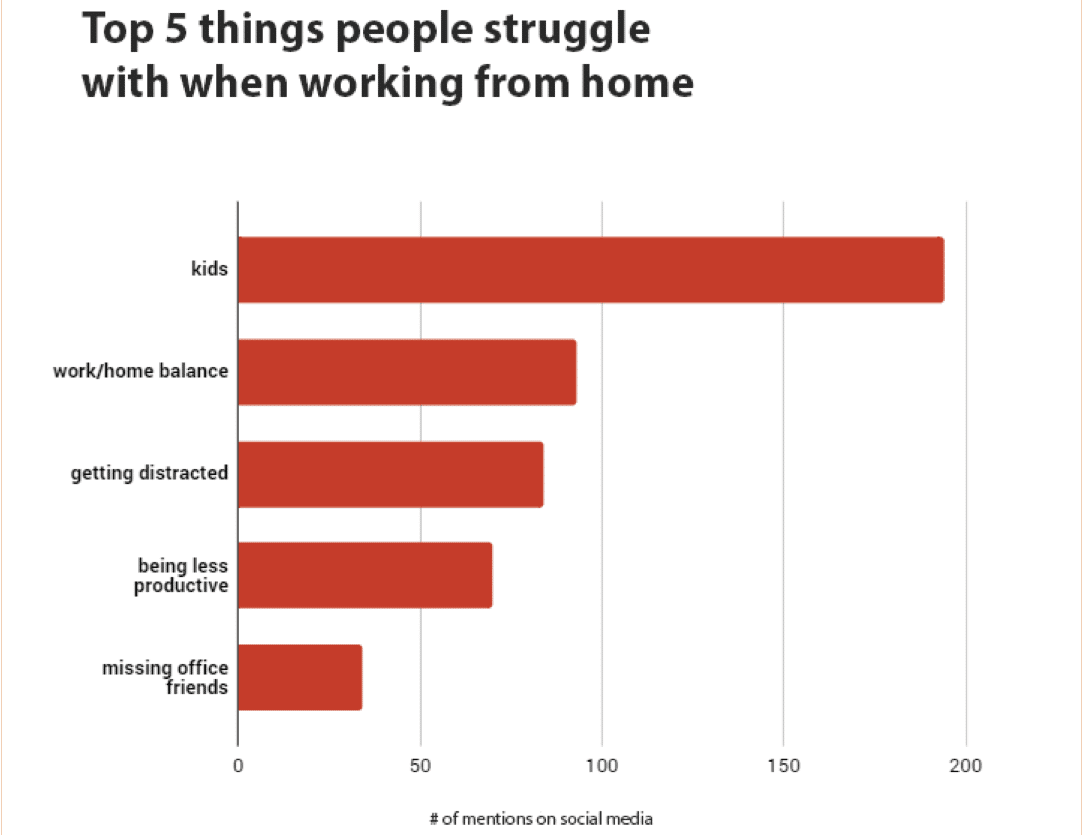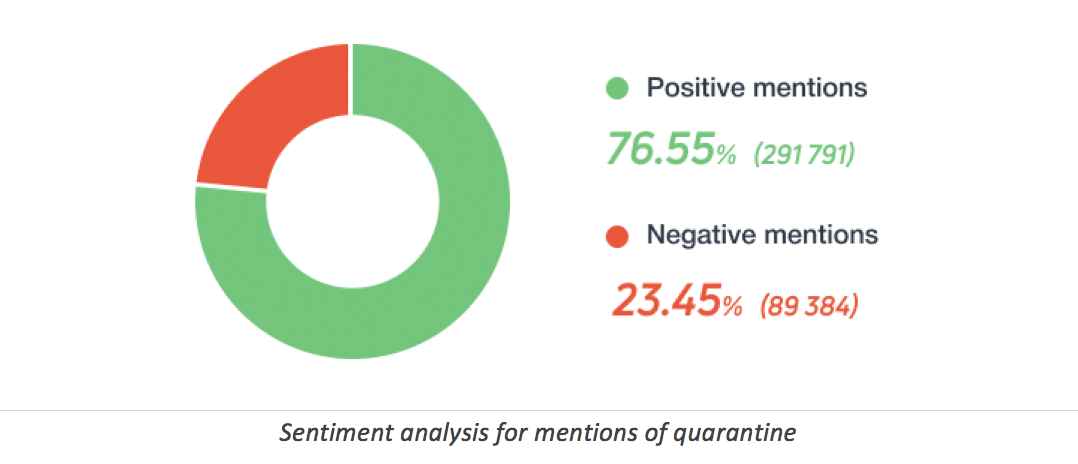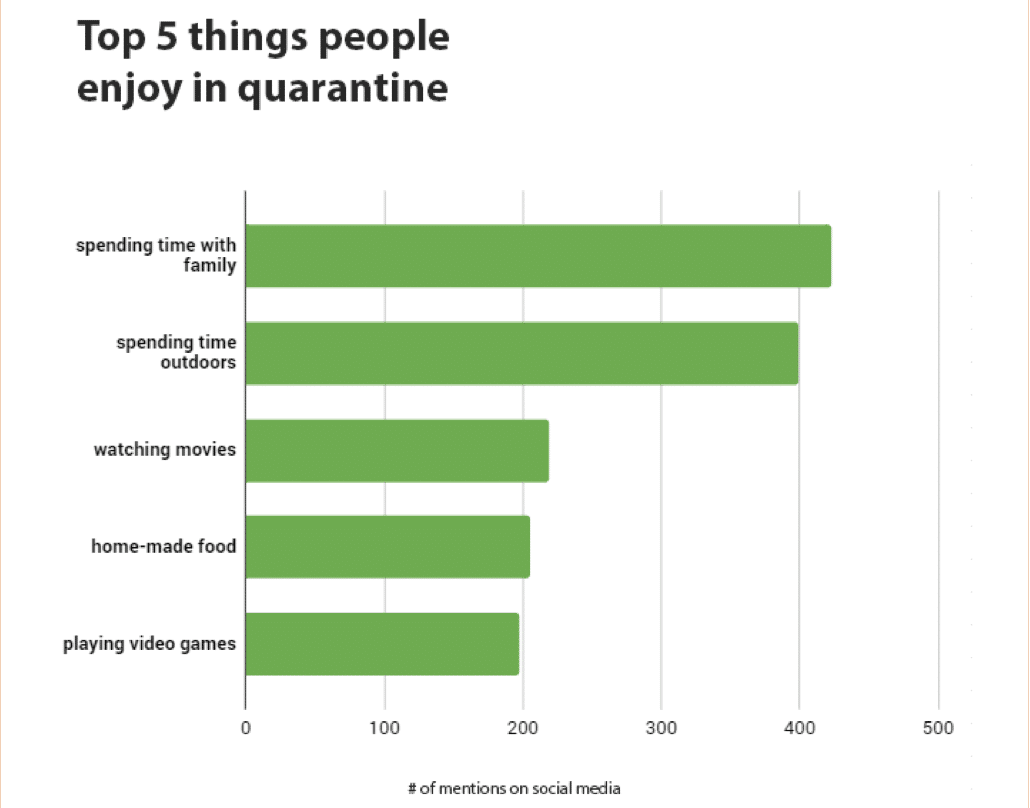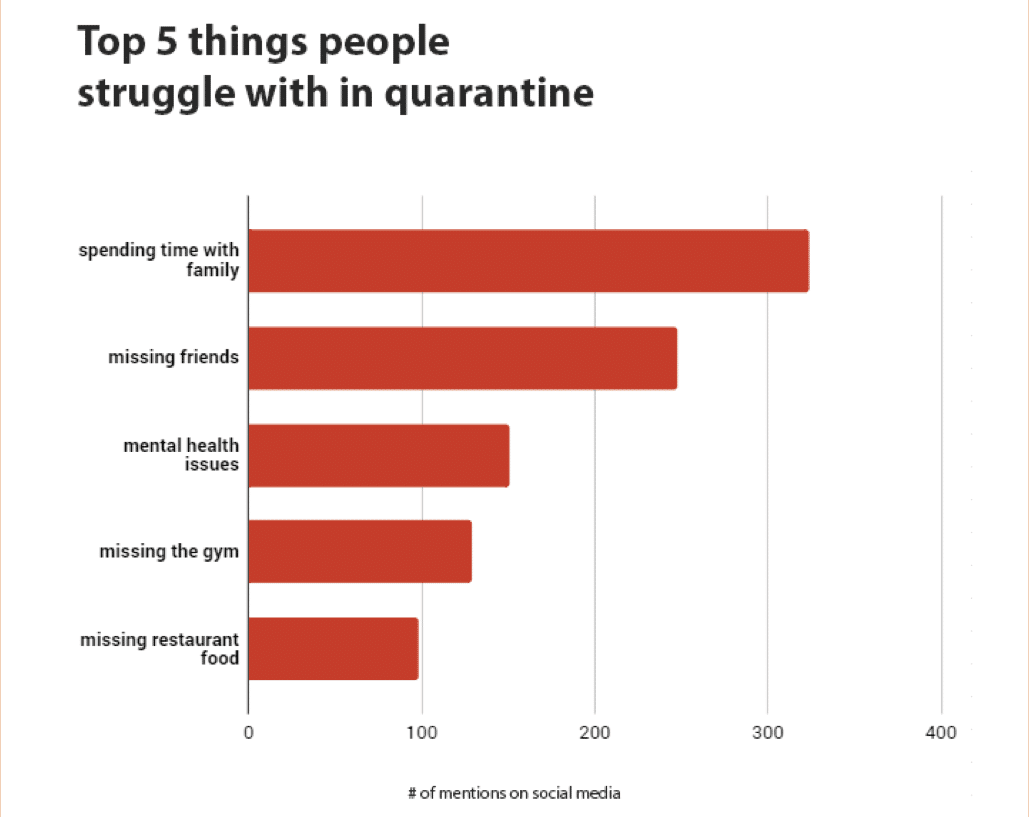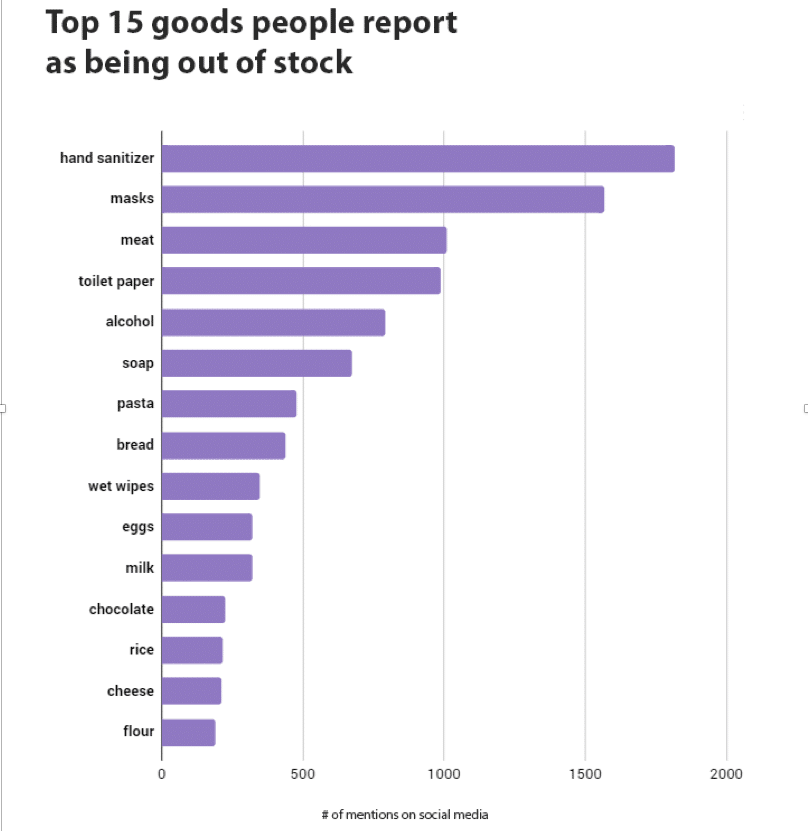Whether we like it or not, the coronavirus pandemic is happening and affecting everything. It’s a challenge to governments, healthcare systems, and markets. Meanwhile, quarantine, social distancing, and remote work have become a reality for many of us. Naturally, all of this is reflected in social networks—the medium people resort to now more than ever.
When social media feeds become contaminated with COVID-19, navigating pandemic-related posts can be devastating. To our aid, there are social listening tools built to collect and process tons of social data, non-stop. It therefore makes sense to turn to social listening technology to examine conversations around coronavirus and the reality it brought onto us.
The tool used for this research is Awario (full disclosure: I’m on Awario’s marketing team). For those of you wishing to follow COVID-19’s journey around social media, there’s also a live stats page with social data updated in real-time.
Let’s see what 24/7 social media monitoring helped us understand about the world in times of COVID-19.
Key social listening stats
In the span of one month, over 19M mentions of COVID-19 were posted on social media and the web. The combined reach of these posts was over 3 trillion impressions.
In other words, if there are over 4.5 billion Internet users worldwide, each of them was exposed to coronavirus-related information online 686 times over one month. This is hardly surprising given that opinion leaders and influencers from all walks of life speak up, amplifying the reach of pandemic-related posts even further.
Meanwhile, key words and phrases analysis revealed that:
- to social media users, peopleand healthare bigger concerns than business;
- Trump is the only person who made it to the list of key topics;
- India and China are the countries featured the most in the COVID-19 discussion.
COVID-19 conversations are many, and so are the ways to look at them. With key stats and topics sorted out, let’s take a closer look at the conversations around specific aspects of the pandemic reality. Mainly, what social media users have to say about remote work, quarantine, and panic buying.
Remote work: social media’s thoughts
The pandemic locked a lot of us down in our homes. We have a lot of thoughts about it, but what are the running themes? To uncover those, we need to look at the mentions of phrases like remote work, home office, working from home, etc. Out of the 19M mentions of COVID-19, some 733,200 fit the criteria.
So, do people love or hate the remote work experiment? The answer is in the sentiment behind the social media conversations.
As the sentiment breakdown suggests, most people keep a positive attitude towards working from home. As far as the specifics of remote work go (for this, unique posts without links were searched for phrases like the best part,the best thing, I love, I enjoy), below is the top-5.
Evidently, working from home makes all of our time family time. And most people seem to be cherishing the opportunity to be around their loved ones, and that goes for families as much as pets. Then go simple pleasures of home-cooked food, loud music, and coffee—something traditionally enjoyed at the office but newly discovered at home.
Meanwhile, among the aspects of remote work people struggle with are kids, supposedly getting in the way of working. #2 on the list supports that, with work/home balance becoming a challenge, bringing about distractions and reduced productivity as a result. Missing office friends emerged as the last disadvantage of working from home.
Quarantine: social media’s thoughts
While working from home is a usual state of things for some of the world’s workforce, being quarantined is new and doesn’t sound like any fun. And yet many are living the quarantine reality right now and indefinitely.
To examine social media conversations around quarantine, mentions of quarantine, self-isolation, and social distancing were collected and analyzed. During one month of social listening, 1.7 million unique posts matching the criteria appeared on social networks.
Surprisingly, the sad reality of quarantine did not result in a much larger share of negative mentions—under a fourth of all quarantine-related social media posts were explicitly negative. Let’s move on to the key aspects of social distancing people liked and disliked the most.
Yet again, family comes first, followed closely by spending time outdoors (hopefully, in the isolation of one’s backyard). The rest of the things on the list are enjoyed while staying inside:homemade food, video games, and movies. Hardly a coincidence, Netflix was the most frequently mentioned brand, boasting 9,960 mentions.
Out of the things people in quarantine struggle with the most, family time surpasses everything. When isolated, missing friends, the gym, and restaurant food, all that is left is going online to let it all out. Among other things complained about the most under quarantine are mental health issues that exacerbate under the circumstances.
Panic buying: social media’s thoughts
Panic buying is talked about a lot. With so many items out of stockand sold out, manufacturers must be happy as can be. For customers, however, things are quite the opposite. Based on social media listening analysis, below are items mentioned the most in posts featuring out of stock and sold out.
Apart from customer (dis)satisfaction insights, the breakdown offers insights into the items consumers find essential in a pandemic scenario. While companies are expanding production to meet the new demand, social media users can only hope for fully re-stocked shelves and reduced panic buying in the near future.
Final thoughts
It’s overwhelming to think about just how much our lives have changed (and will keep changing) as long as COVID-19 holds the world hostage. Self-isolated and socially distanced, we look for answers on social media. In times of a global pandemic, it’s most reflective of major trends and changing paradigms. Social media offers plenty of insights both for individuals and companies surviving the crisis. The key here is to listen.


